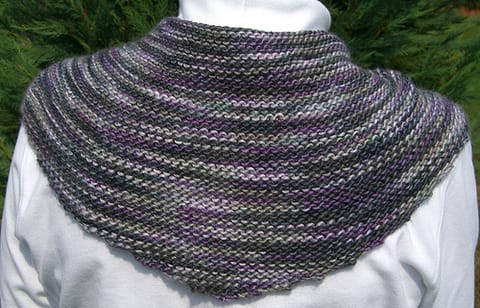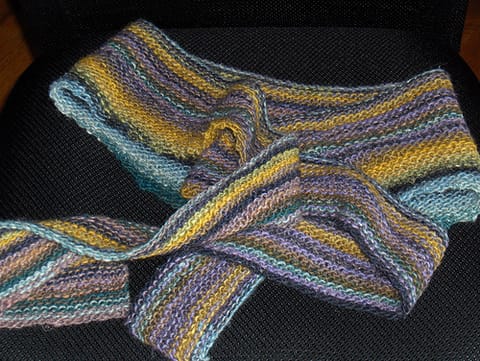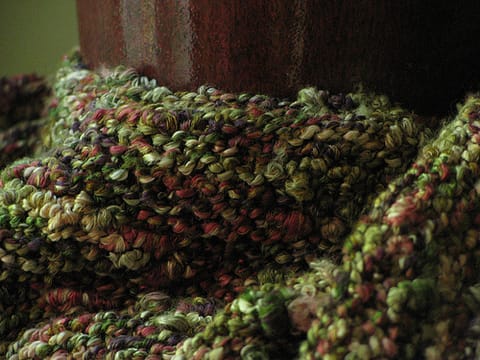It should come as no surprise that I am dedicating one blog post to the getting ready to dye and knit my two sock blanks. It’s all about The Process, baby!
Let’s start with the inspiration!
I’ve never been particularly confident with my color “science” when I have dyed yarns and fibers in the past. I have always struggled with getting what I see in my mind’s eye captured in fiber. I came up with an idea that has worked out beautifully with this week’s Sock Blank Dyeing “workshop”.
I decided that rather than try to leap from my imagination to finished product, I would bridge the gap with an inspirational bit of fabric. I found some fabric that I absolutely loved and then proceeded to choose Jacquard dyes I thought would produce a selection of the colors. I would have to do a little bit of color blending but the straight-out-of-jar colors would do most of the work.
The next step in my prep work was to choose a project.



Sally Melville’s S
hape It Scarf from The Knit Stitch met all my criteria. I wanted something that would show off the colors, knit up very fast and would use only one sock blank. I was not at all interested in complicating my dyeing world by trying to coordinate colors in two sock blanks. You can see from the photos I picked up in Flickr that the Shape It Scarf is wonderfully versatile.
Finally, I needed to get the sock blanks ready.
As soon as you take your sock blank out of its packaging, run a long strand of plain old kitchen cotton string through the yarn loops at each end using a blunt needle. You can also use cotton knitting yarn. Be sure that the strand is long enough to allow you to knot the ends to secure them but allow the sock blank to lay flat.
If you are going to use a “wet” method for your dyeing, put your sock blank in a sinkful of nice warm water and let it lay in there for several hours. You can’t really leave it in too long. I soaked both of mine in the morning so they were ready for me to dye when I got home from work.
The reasons why you need to soak your sock blank, or any other yarn, are the same reasons why wool is so nice and warm – air pockets. When you spin those soft and curly fibers around each other to make yarn, tiny little are spaces are formed. When you wear a sweater or hat or whatever, those air pockets act as insulation. Those same air pockets are resistant to dye. Think about a balloon floating on a tub of water. The water can’t get into the balloon. The result can be uneven take up of dyestuff. After a long soak, the air pockets have collapsed and the entire surface of each fiber is available to the dye.
I soaked both of my sock blanks but ended up dyeing one “dry” to see what happened. I will talk about the “wet” vs. “dry” method tomorrow when I get into the details of my actual dyeing process. “Process” makes it sound like I actually know what I am doing. Maybe “experiment” would be better.
You are truly going to wonder how my mind works when you see the dyeing trick I have to share with your tomorrow.


